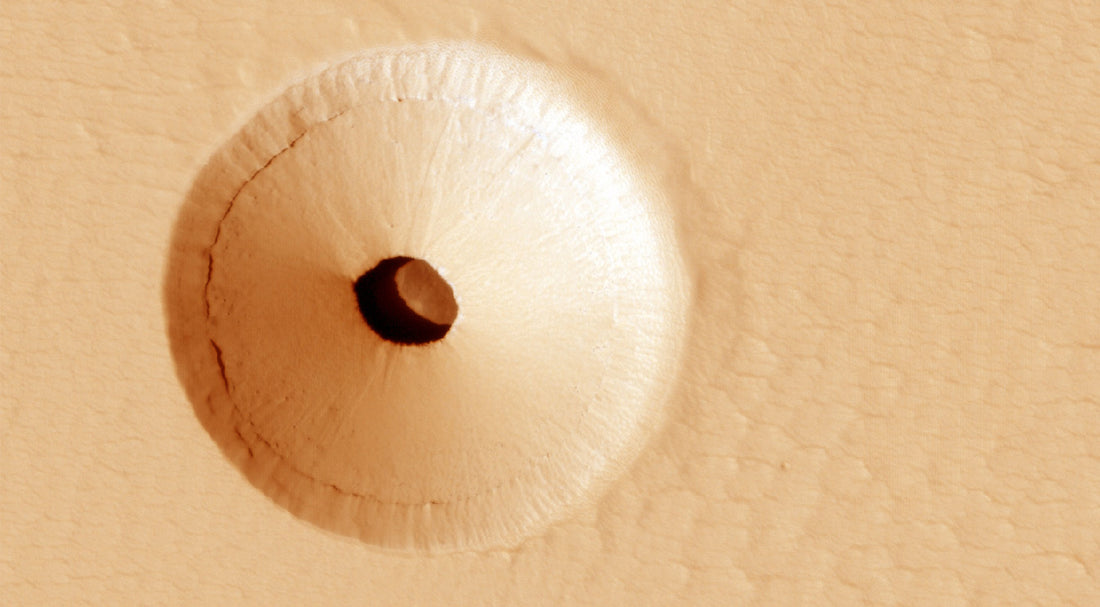
NASA Unveils Crusty Brown Martian Hole, Possibly Alien Filled.
Share
Until recently, we thought Mars was only populated by Earth robots...
However, a recent discovery on the barren surface of Mars has space enthusiasts tingling at the thought of alien life.
With the discovery of this surprise Mars hole, scientists are fascinated at the possibility of it housing forms of life.
Although it was discovered in 2011 by the Mars Reconnaissance Orbiter (MRO), the yawning cavernous hole has been relatively unexplored, until now.

Upon sharing as NASA's Astronomy Picture of the Day, the common man/woman has been fascinated by the deep Mars hole.
The HiRISE instrument aboard the MRO does not show representative colour, so we can not observe gradients of elevation and depth well.
With representative colour showing the hole, NASA has discovered that it indeed opens up to a large cavernous chamber about 35m across and 20m deep situated at the bottom of a bowl-like crater.

The hole is of particular interest as the interior chamber is protected from the many harsh environmental impacts that ravage the surface, like sandstorms for months on end.
For one, chamber such as this can house life from severe radiation on the surface
This creates a safe haven for the possibility of life.
NASA is now scrambling to assemble spacecraft and robots to venture into the depths of the brown mystery hole.

Scientists believe that the hole - situated on the slopes of the Pavonis Mons volcano - is a lava tube skylight that has leaked lava to the surface in the past and left an empty sanctuary for potential life in its wake.
The delining slope around the opening is confusing space personnel as it does not match an impact crater. Best estimates say that the hole was much larger and deeper but the soil has begun to fill the cavern over time.
A digital terrain map has shown how much debris and soil has fallen in over time and the rubble within the chamber is at least 62 metres deep, meaning the chamber's depth was at least 90m deep at one point in time.

Lava tube skylights are of particular interest to scientists not only for their potential for life but for human explorers to seek refuge or even start a colony or research base.
What do you think is inside the mystery hole on Mars' crusty brown surface?
Would you fill it with humans?
Let us know in comments and share with a friend as we thrust into the deep unknown!
#Space_Aus




